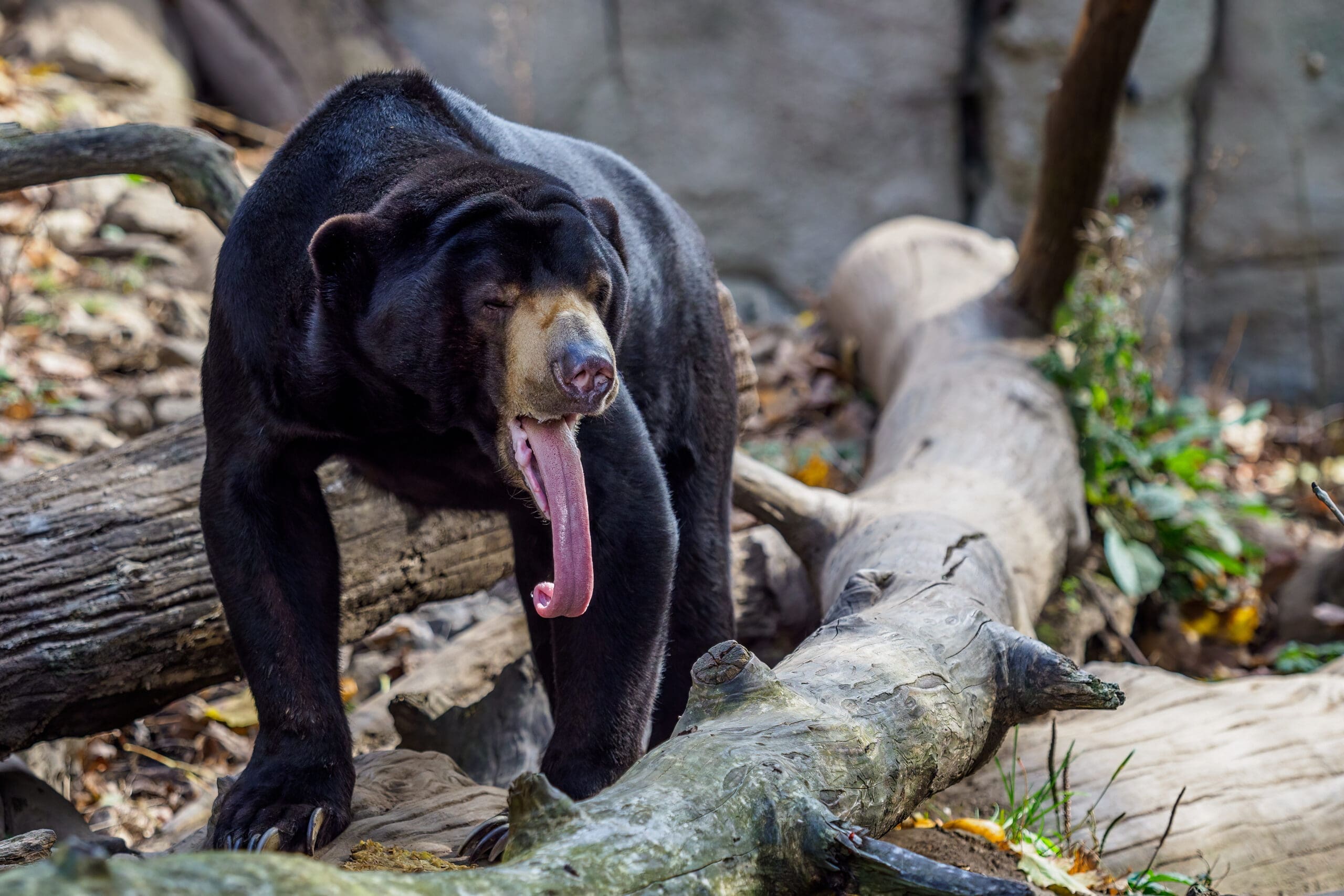Sun Bears: Tiny Titans of Tropical Forests and Their Battle for Survival
Amidst the lush green expanses of Southeast Asia, the sun bear, known affectionately as the “forest doctor,” plays a crucial role in maintaining the ecological health of its habitat. The smallest member of the bear family, the sun bear has a presence that belies its size. Wong Siew Te, the founder of the Bornean Sun Bear Conservation Center, describes them as critical to their ecosystems, saying, “They’re not just living in the forest; they’re essential for its survival.”
These bears are adept at manipulating their environment to suit their needs, using their impressive physical abilities to reshape the forests. “Sun bears are forest engineers,” notes Roshan Guharajan, a researcher with Panthera in Malaysian Borneo. Their long tongues, capable of extending up to ten inches, allow them to expertly harvest honey from beehives nestled within tree trunks.
The holes they leave behind become vital nesting sites for various forest creatures, enhancing biodiversity. Additionally, their diet includes fruits like figs and durians, which they help disperse across the forest floor, aiding in vegetation growth and forest regeneration.

Despite their significant environmental contributions, sun bears face numerous threats primarily due to human activities. Habitat destruction from logging and the expansion of palm oil plantations has severely fragmented their living spaces.
Furthermore, poaching for traditional medicine and the illegal pet trade has drastically reduced their numbers. “In the last 30 years, we’ve seen a decline in sun bear populations by more than 35%,” Dave Garshelis, co-chair of the Bear Specialist Group at the International Union for Conservation of Nature, highlights the critical situation.
To counter the lack of comprehensive data on sun bear populations and distribution, conservationists are embarking on a new initiative to map their habitats more accurately. This project will integrate data from camera traps, field surveys, and expert insights to develop a computer model that predicts potential sun bear locations based on environmental factors such as tree cover and proximity to human developments.
READ NEXT:WHY ARE ELEPHANTS SO IMPORTANT FOR THE AFRICAN ECOSYSTEM?
“The new mapping initiative is crucial. Without it, we’re basically guessing where these bears are and where they need protection,” Garshelis explains. This enhanced understanding will help conservationists identify priority areas for intervention, aiming to connect fragmented habitats and shield these regions from further deforestation.
Through dedicated conservation efforts, there is hope for the sun bears. By safeguarding these animals, conservationists are not only protecting an incredible species but also preserving the complex web of life that defines the tropical forests of Southeast Asia.
